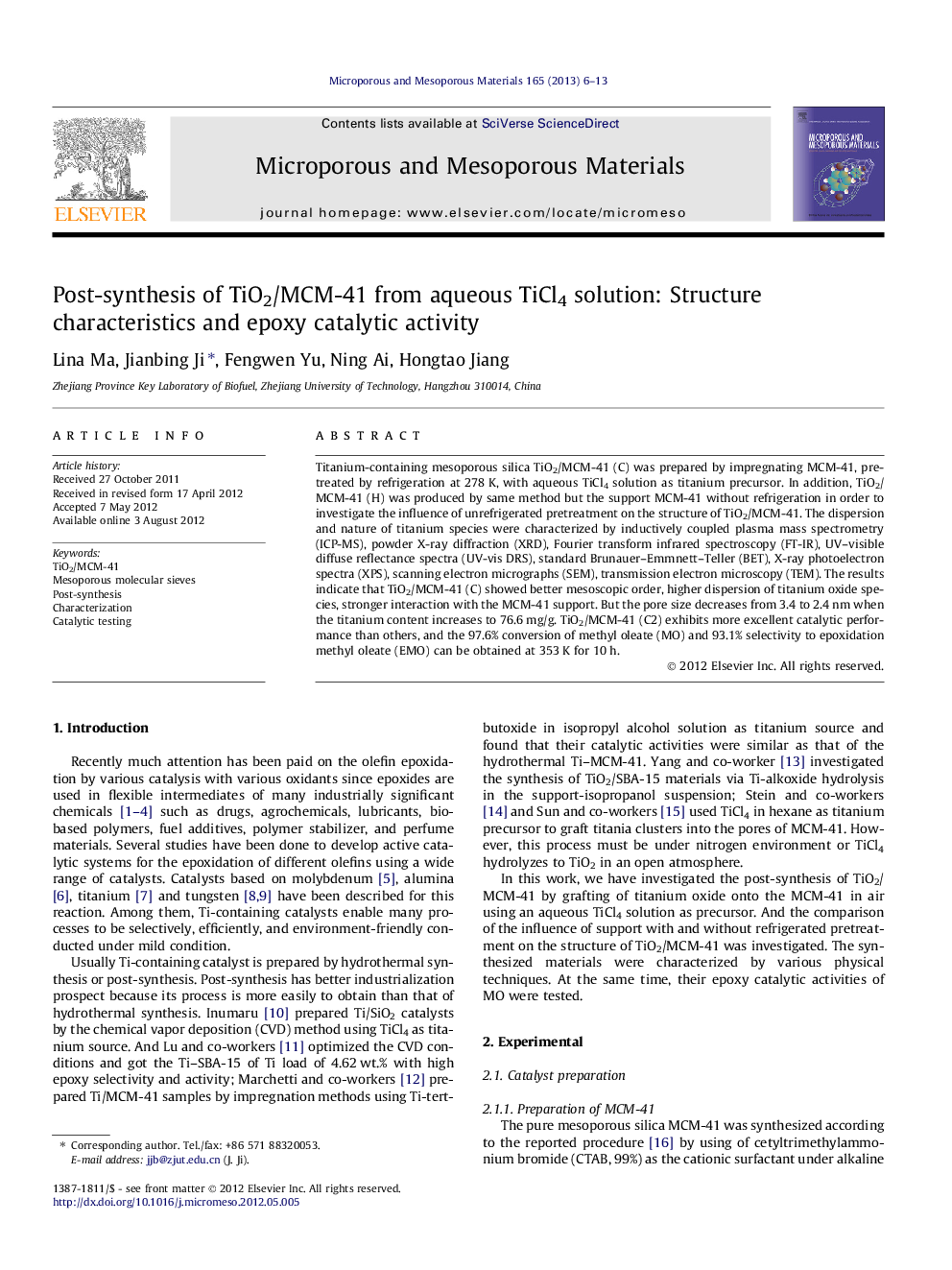| Article ID | Journal | Published Year | Pages | File Type |
|---|---|---|---|---|
| 73904 | Microporous and Mesoporous Materials | 2013 | 8 Pages |
Titanium-containing mesoporous silica TiO2/MCM-41 (C) was prepared by impregnating MCM-41, pretreated by refrigeration at 278 K, with aqueous TiCl4 solution as titanium precursor. In addition, TiO2/MCM-41 (H) was produced by same method but the support MCM-41 without refrigeration in order to investigate the influence of unrefrigerated pretreatment on the structure of TiO2/MCM-41. The dispersion and nature of titanium species were characterized by inductively coupled plasma mass spectrometry (ICP-MS), powder X-ray diffraction (XRD), Fourier transform infrared spectroscopy (FT-IR), UV–visible diffuse reflectance spectra (UV-vis DRS), standard Brunauer–Emmnett–Teller (BET), X-ray photoelectron spectra (XPS), scanning electron micrographs (SEM), transmission electron microscopy (TEM). The results indicate that TiO2/MCM-41 (C) showed better mesoscopic order, higher dispersion of titanium oxide species, stronger interaction with the MCM-41 support. But the pore size decreases from 3.4 to 2.4 nm when the titanium content increases to 76.6 mg/g. TiO2/MCM-41 (C2) exhibits more excellent catalytic performance than others, and the 97.6% conversion of methyl oleate (MO) and 93.1% selectivity to epoxidation methyl oleate (EMO) can be obtained at 353 K for 10 h.
Graphical abstractFigure optionsDownload full-size imageDownload as PowerPoint slideHighlights► TiCl4 as titanium source. ► Post-synthesis by impregnating MCM-41 with aqueous TiCl4 solution. ► The support pretreated by refrigeration is of crucial importance for the nature of catalyst. ► Epoxy catalytic activity largely depends on the nature of titanium oxide species on the support.
